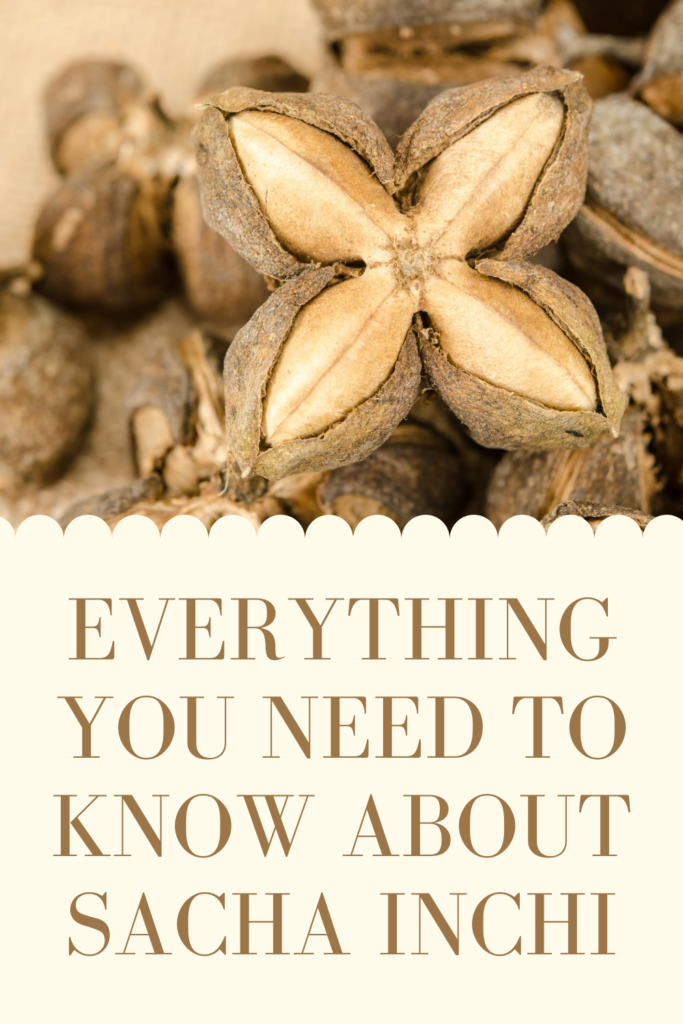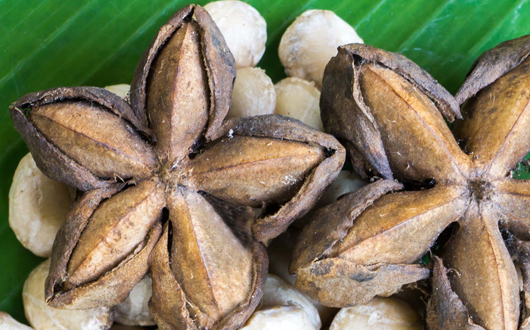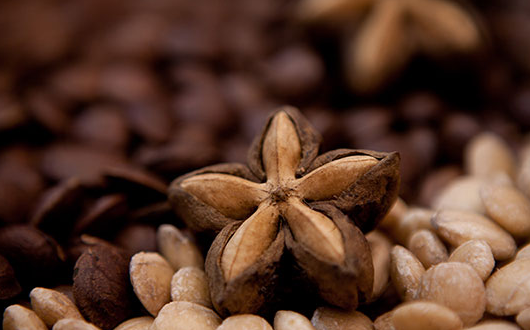The quest for the healthiest snack is at all times on-going. Sometimes the only health benefit to healthy snacks are their low-calorie count. Oftentimes, the healthiest snacks have a taste which overpowers the palate, making it difficult to consume. Sacha Inchi however, might just provide a low-calorie, great tasting new option for consumers.
This Peruvian plant offers multiple health benefits such as weight loss and lower cholesterol. Not only does the plant promote weight loss, it has an enjoyable nutty flavor which resembles almonds or peanuts.
Sacha Inchi is a relatively new plant on the market with amazing health benefits and overall health care.
What Is Sacha Inchi?
Sacha Inchi is a Peruvian plant which can be found in the Amazon rain forest or on the east slope of the lower Andes.
The indigenous plant thrives in warm climates, up to elevations of 1,700 meters, as long as it has a consistent source of water and decent drainage. It grows best in acidic soils and sedimentary flats near rivers.
This plant is an eye-catcher at two meters high, with delicate white flowers, split leaves and star-shaped green fruits being produced nearly year-round.
Once ripe inside, the unusual shaped fruit lays oval, with dark brown seeds which look similar to nuts. These almond-like seeds are called Sacha peanuts, Inca peanuts or mountain peanuts.
More on Sacha Peanuts
Sacha peanuts contain the amino acid tryptophan, which is known to improve your mood, making this snack even more appealing.
After the fruit has been de-seeded it is then used in the production of flour, bread and protein powder. Not only is Sacha Inchi utilized in consumable goods, it also appears in soap, cosmetics and medicinal creams on the market.
History of Sacha Inchi
The Indians of the Amazon Rainforest, also known as the Incas, have known about Sacha Inchi far longer than we have.
For over three thousand years, the Incas have kept this plant a secret among their tribe. Their children grew up eating the natural Sacha peanuts, providing a boost for them along the lines of what our chemically enhanced vitamins do for us.
Elder tribal members ate them as well to keep them healthy, strong and able to pass their wisdom down for generations.
The seeds contain a high source of protein, as well as fat, to keep tribal members from dying at a young age. Not only was Sacha Inchi used to keep them healthy, but also for the purpose of medicinal healing properties as well.
Health Benefits
- Omegas – This powerful superfood contains high levels of polyunsaturated fatty acids also known as Omega 3 and Omega 6. It contains 48 percent Omega 3 and 36 percent Omega 6, which preserves your health and helps prevents heart disease, stroke, lupus, depression, inflammatory bowel disease and cancer, among other things.
- Antioxidants – The antioxidant vitamins A and E are important for vision, immune system, reproduction and defending cells from damage. It also improves hair and skin.
- Protein – Sacha seeds have 27 percent of your daily protein requirements, vital for cell growth and healing, as well as regulating fluid balance. For a vegetarian diet, protein is vital or else the body would shut down.
- Cholesterol – The seeds also dramatically lower cholesterol.
- Minerals – Sacha Inchi has crucial minerals such as calcium, magnesium, and zinc. Furthermore, the seeds contain iodine, which is necessary for thyroid function and regulating metabolism.
- Weight Loss – Now the best part, Sacha seeds promote weight loss! This natural weight loss supplement contains high levels of tryptophan, an amino acid, which produces serotonin. Serotonin helps to regulate appetite.
Considerations
Sacha peanuts may not be recommended for treating any health condition alone. It does, however, help prevent many diseases, and enhances overall health and appearance. With all this new information, it’s a wonder why people don’t consume more of it.
The downside of this multiuse plant is the price. It’s priced much higher than many other available snack options.
The reason they are so pricey is because it is new to the market and imported. A three-ounce bag of the Sacha Inchi seeds can cost around seven dollars. Consider Sacha peanuts as a treat instead of an essential.
While Sacha Inchi is expensive, it does bring money to rural areas and allows native groups to stay in their homes. The Ashaninka, an ethnic group in the Peruvian Amazon rain forest, are able to stay in their village by becoming farmers.
Sacha Inchi is a high-yield crop meaning only a small amount of space is needed to cultivate and make a huge harvest from the plants.
The farmers put plenty of care into the durable plants by fertilizing, trimming and pruning, and keeping the plants on the frame and weeded. They also insure crop health by knowing what not to plant around the Sacha Inchi. The Cocona plant transfers a fungus which is destructive to the Sacha Inchi vines.
Once planted, farmers wait for the fruits to get ripe. The easiest way to get the delicious seeds is to pick the fruit and leave them to dry out for three days. After three days, it is easier to remove the seeds from the pods.
References:
- Ancient Incan Superfood: Sacha Inchi Nuts A Potent Anti-Inflammatory: http://undergroundhealthreporter.com/superfood-sacha-inchi-nuts/#axzz3aX6Y5CSC
- Ask the Expert: Omega-3 Fatty Acid http://www.hsph.harvard.edu/nutritionsource/omega-3/
- The Facts on Omega-3 Fatty Acids http://www.webmd.com/healthy-aging/omega-3-fatty-acids-fact-sheet
- Vitamin A Fact Sheet for Consumers: http://ods.od.nih.gov/factsheets/VitaminA-Consumer
- Vitamin E Fact Sheet for Consumers: http://ods.od.nih.gov/factsheets/VitaminE-Consumer
- The Benefits of Sacha Inchi: http://altmedicine.about.com/od/herbsupplementguide/a/Sacha-Inchi.htm
- Sacha Inchi History: https://incaliving.com/sachainchi-history
- Sacha Inchi Super Food, The Inca-Nut: http://dawnontheamazon.com/blog/2009/07/31/sacha-inchi-super-food-the-inca-nut/
- Sacha Inchi Seeds: A Gift from the Amazon: http://www.naturalnews.com/042680_sacha_inchi_seeds_plant_oils_health_benefits.html
- Sacha Inchi: http://www.healthyfellow.com/282/sacha-inchi/
- Plukenetia Volubilis: http://en.wikipedia.org/wiki/Plukenetia_volubilis
- Ashaninka: http://www.everyculture.com/wc/Norway-to-Russia/Ash-ninka.html
- Cultivate Fierce Health and A Bright Mind With Incan Sacha Inchi: http://www.naturalnews.com/038609_sacha_inchi_Incas_superfood.html#
Enjoyed Everything You Need to Know About Sacha Inchi? Share it with your friends so they too can follow the Superfoodsliving journey.
Share on Pinterest


